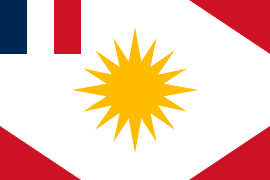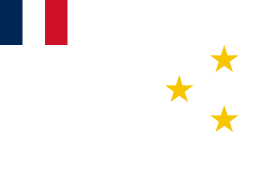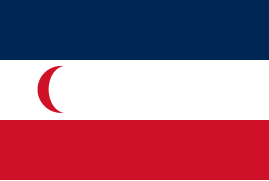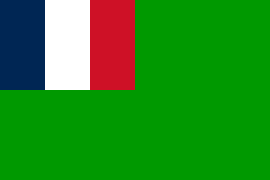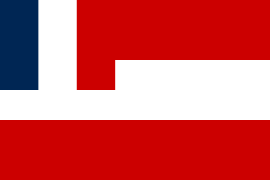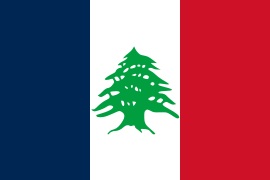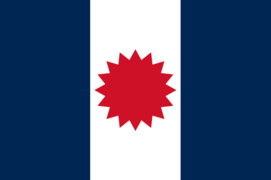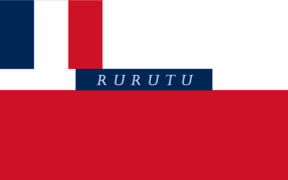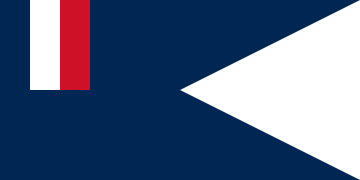Flag of France
How the Flag of France (French: drapeau tricolore [tricolor flag], drapeau bleu-blanc-rouge [blue-white-red flag], drapeau français [French flag] and, in military parlance, les couleurs [the colours]) dates from the French Revolution and It consists of three equal-sized vertical stripes of blue and red at the ends (the colors of the coat of arms and flag of Paris) and white in the central strip, the color of the monarchy. The design is attributed to the Marquis de Lafayette and initially the colors were in reverse order, until the rainy 27 of the year II (February 15, 1794), already during the First Republic, the order was altered, remaining as they currently appear..
During the Bourbon restoration, the tricolor flag was replaced by a completely white flag. After the Revolution of 1830 and the accession to the throne of Luis Felipe I, the tricolor flag was adopted again. Following the fall of the Louis-Philippe monarchy, the colors of the flag were once again altered for a brief period of time (February–March 1848). Subsequently, the decree of March 5, 1848 restored the blue-white-red order, remaining unchanged until today.
Construction of the flag
Article 2 of the 1958 French Constitution states that "the national emblem is the tricolor flag, blue, white and red". No law has specified the shades of these official colours. In the English coat of arms, the flag is described as tierced in pale azure, argent and gules.
The blue stripe has usually been dark navy blue; a lighter blue (and slightly lighter red) version was introduced in 1974 by President Valéry Giscard d'Estaing. Both versions have been used ever since; town halls, public buildings and barracks often fly the darker version of the flag, but the lighter version was sometimes used even on official state buildings. On July 13, 2020, President Emmanuel Macron resumed, without any statement and without orders for other institutions to use a specific version, the darker hue for the presidential Élysée Palace, as a symbol of the French Revolution. The move was met with comments both for and against the change, but it was noted that both the darker and lighter flags have been used for decades.
| Authority | Scheme | Blue | White | Red |
|---|---|---|---|---|
| Ministry of Defence | AFNORNFX 08002 | A 503 | A 665 | An 805 |
| Embassy in Germany
(lighter colors) | Pantone | Reflex blue | Safe | Red 032 |
| CMYK | 100.80.0.0 | 0.0.0.0 | 0.100.100.0 | |
| RGB | (0.85.164) | (255,255) | (239.65.53) | |
| HEX | #0055A4 | #FFFFFF | #EF4135 |
Currently, the flag is one and a half times as wide as its height (ie in the ratio 2:3) and, except in the French Navy, has stripes of equal width. Initially, the three stripes on the flag were not equally wide, but had the proportions 33 (white). Under Napoleon I, the proportions were changed to equal the width of the stripes, but by a regulation of May 17, 1853, the navy reverted to the 30:33:37 ratio, which it still uses now, since the fluttering of the flag makes the parts furthest from the halyard appear smaller.
In interviews on French television, a flag with a much narrower white stripe is often used as the background; a standard flag would look, up close, only white.
History
White was the national color of France from the advent of the Bourbons to the throne of that kingdom until the Revolution of 1789. On July 12 of that year, the patriots who fought the National Assembly gathered in the garden of the Palace Real, they took green leaves from the trees and put them on their hats as cockades or particular badges; remembering that green was the color of the livery of the Count of Artois, the most unpopular person in the royal family, they gave up wearing that badge.
The following day an order appeared from the Comité de Comune which provided that all armed citizens should wear the colors of the city of Paris, red and blue, instead of white. This was done until, after the Storming of the Bastille, it was agreed to unite both colors, distinctive of the patriots, with white, which was the color of the still reigning dynasty, as a sign of union between the people and the monarch. On the 17th of the same month, when these three colours, red, blue and white, were gathered together, they were adopted by Louis XVI himself, who, forming with them a cucarda tricolor , placed them himself in his hat in front of the people summoned and gathered in the Place de Grève.
Since then the Cucarda tricolor everywhere replaced the white cockade, and the three colors became the national colors of France. However, the flags of the regiments and the banners of the squadrons continued as before and were only adorned with a tricolor tie until 1792, when the cloth of said insignia also became a tricolor or three strips of red canvas., blue and white.
When the Restoration took place in 1814, the Bourbons returned to their old flag and white livery, but after the Revolution of 1830 the tricolor emblem was definitively adopted.
Previous flags
The oldest insignia of the Kingdom of the Franks was, according to tradition, the cape of the popular Saint Martin, Bishop of Tours The historian Du Cange, in the 18th century XVII, considered that this emblem was a small portable pavilion, a kind of box, in which the relics of this saint were found. According to the same author, due to the discomfort that driving this device caused and for fear that the relics would fall into the hands of the enemy, it was replaced by a cloth with the effigy of the saint embroidered on it; This flag was called The cape of Saint Martin , alluding to the widespread legend in which he shares his cape with a beggar who was Christ himself. Du Cange adds that the referred flag was blue, so this would be the national color of France.[citation required]
Between the 9th and 10th centuries, during the reign of Philippe I or his son Louis the Fat, the French monarchs adopted the insignia of the Counts of Vexin, known as Oriflame, as their emblem. This was a banner of red silk with gold flames, emblem of the Abbey of Saint Denis, used by said counts as defenders of the same; By annexing these lands to the royal domains, the ensign began to be carried by the sovereign in war; its use being attested for the first time when in July 1124, Emperor Henry V threatened to invade the kingdom; in response, King Louis VI called a levy at Reims. This gathering of troops was so impressive that the hosts of the Empire withdrew from the border. At that time, Abbot Suger, of Saint Denis, pointed out that this saint was, after God, the protector of the kingdom. In gratitude, the king took the emblem (vexillium) from the altar and swore allegiance to the patron saint of France.
After the Crusades until the reign of Charles VI, the military ensigns of France were decorated with a red cross which Charles VII exchanged for a white one when Henry V, King of England who called himself King of France, had adopted the ensigns of his predecessor Carlos VI.
Although the Bourbons brought the color white to France (usually accompanied by fleurs-de-lys), not for this reason all military insignia have been white since then in the various corps of troops, since there was a great variety among them, although all the military used the cockade or cockade of this color.
Historical flags
Colonial flags
Most French colonies use the regular tricolor or a regional flag without the French flag. There were some exceptions:
Gallery
Contenido relacionado
Paleontology
New Testament
History of Spain

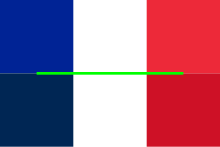


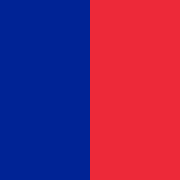












![Pabellón nacional de Francia[10] (1790-1794)](https://upload.wikimedia.org/wikipedia/commons/thumb/7/71/Flag_of_French-Navy-Revolution.svg/120px-Flag_of_French-Navy-Revolution.svg.png)
















